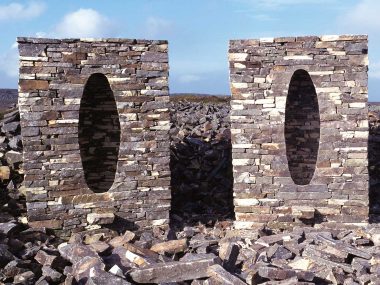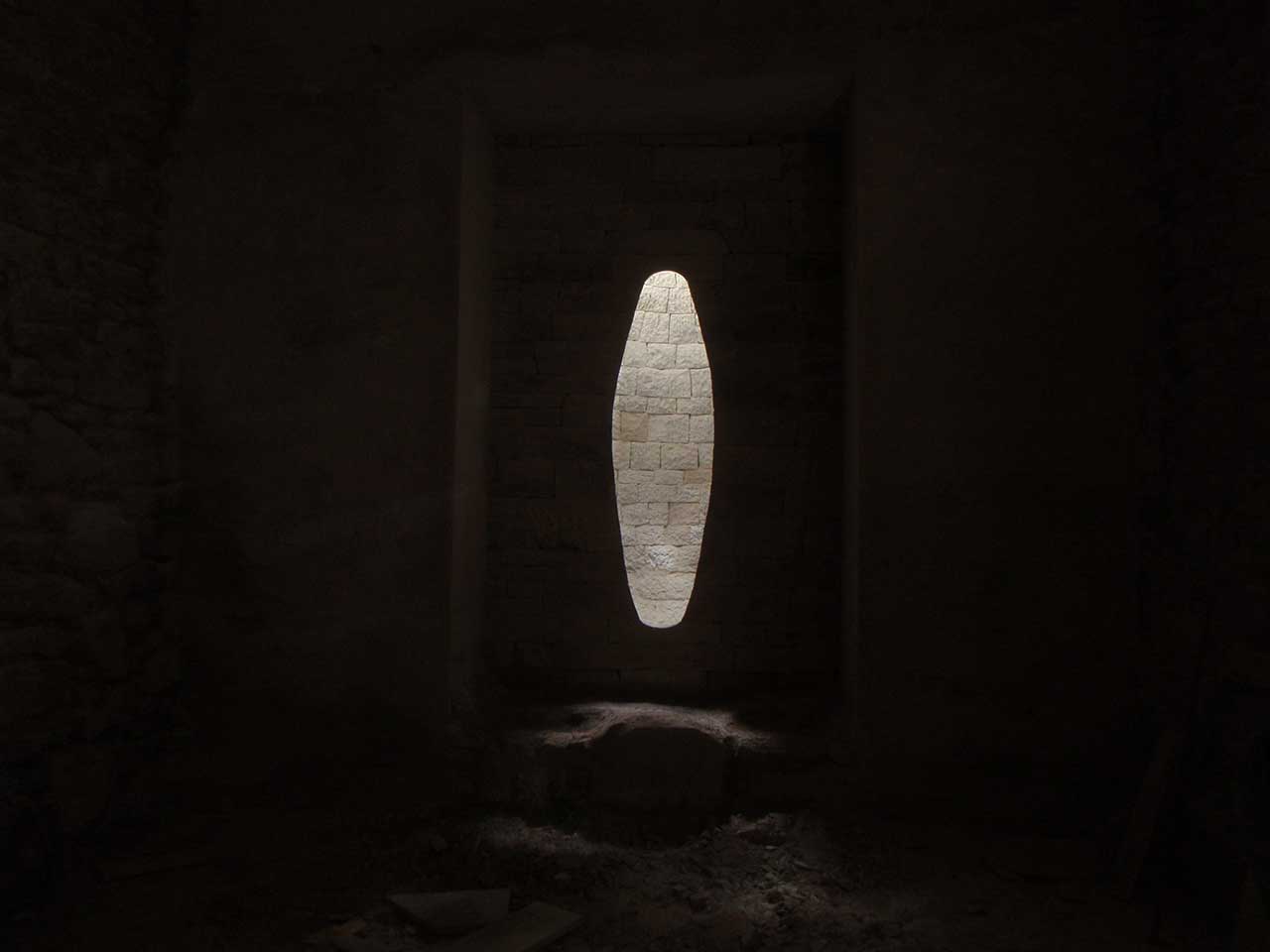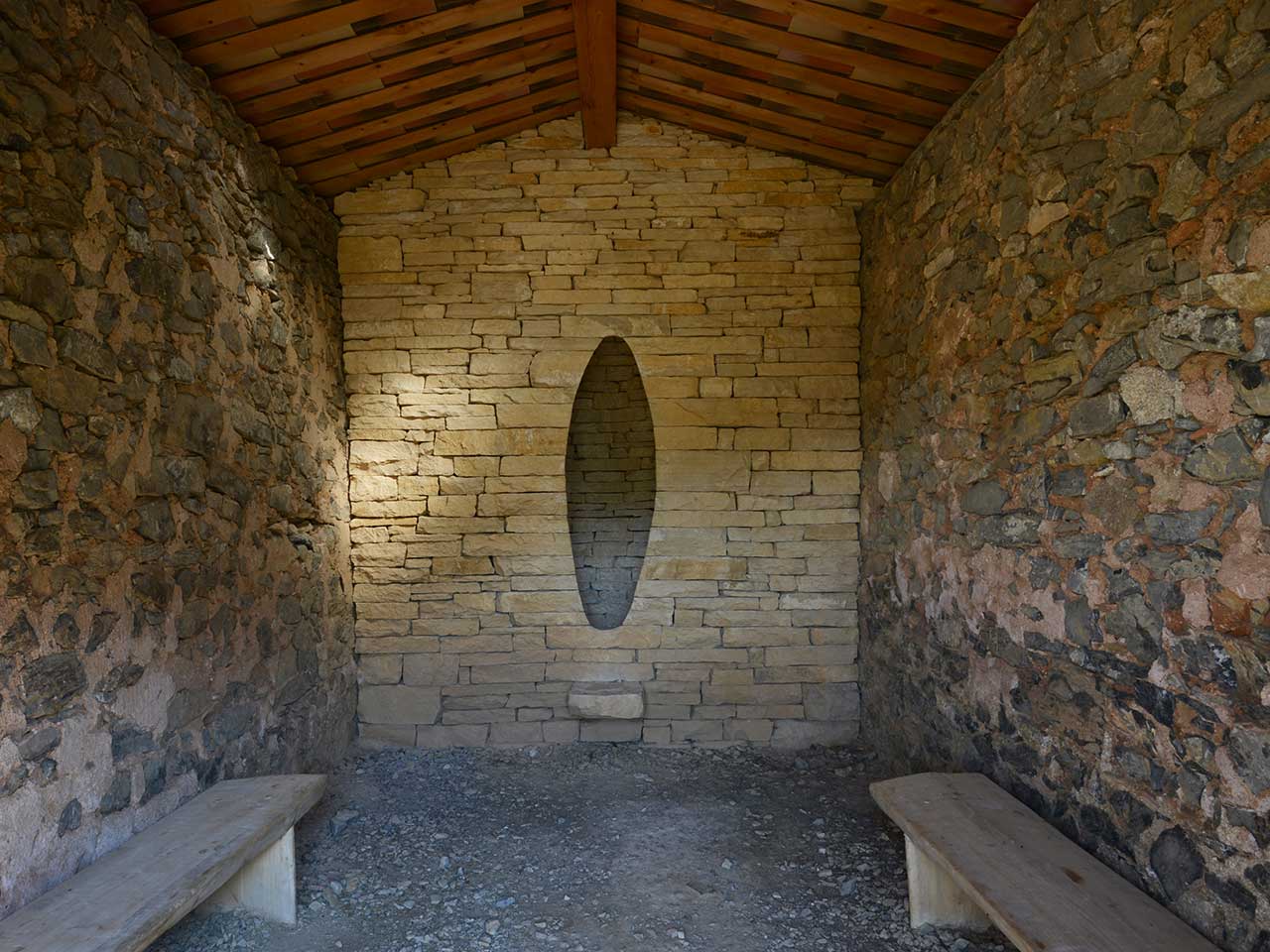I have found it very difficult to find information about this building. All that I can find is the listing below;
Barn, Job’s Well (Chalybeate)
Marked as a Shooting Ho. on the 1940s OS map the windows betray its earlier use. Now used as a barn. A few feet below is the spring, Job’s Well (Chalybeate).
I am not sure what is meant by ‘earlier use,’ but the ecclesiastical appearance of the windows may substantiate an explanation of its original purpose, as given to me by Peter Richardson, the farmer at Northdale. Peter felt that the building was possibly a resting place on a coffin route leading to, or from, Rosedale Priory. Coffins were certainly carried long distances for burial, but it is difficult to know if the windows indicate the building had a religious function or not.
Many parts of Rosedale Priory have ended up in various buildings in Rosedale and this might be one of them.Either way, the orientation and location of the building and the hint of a former road up to it from Rosedale is suggestive of the passage of people up the valley and on to the moors. I am happy to respond to the story – even if unsubstantiated (or incorrect).
The idea of people passing through and leaving a presence lies at the heart of my Rosedale proposals – Job’s Well offers an opportunity to express this.Only occasionally, I propose to make works that I have made previously elsewhere. In this instance I would like to explore an idea that resonates with works that I have already made in Spain, France and England.
These works are Clougha Pike in Lancashire, Chapelle Ste. Madeleine and La Forest in Haute-Provence, and in Cañete, Spain. The works that I have made at each of these places have been influenced by six 11th Century graves cut into the bedrock at Heysham Head, Lancashire. I passed these graves each day as I went to work on the beach when I was a student at Lancaster. They are a powerful expression of the human presence in the landscape.
These works may have their roots in death, but the context in which they have been made make the works very much about life. It is interesting for me to see just how funerary this form becomes when placed on, or inserted, into the floor of a building – especially in a building such as Job’s Well. Obviously this is one of the reasons for making the work at Job’s Well, but I am reluctant to produce a work that is too self-consciously morbid.
Currently, the idea that I am most interested in pursuing is similar to the light chamber at La Forest. The upright illuminated form feels more uplifting that the recumbent hollows on the floor. Achieving something similar at Job’s Well would require darkening the room in order to create a sense of luminescence. I would most likely put in a door to the outside to keep out sheep and also make the room darker.
AG, 2016



